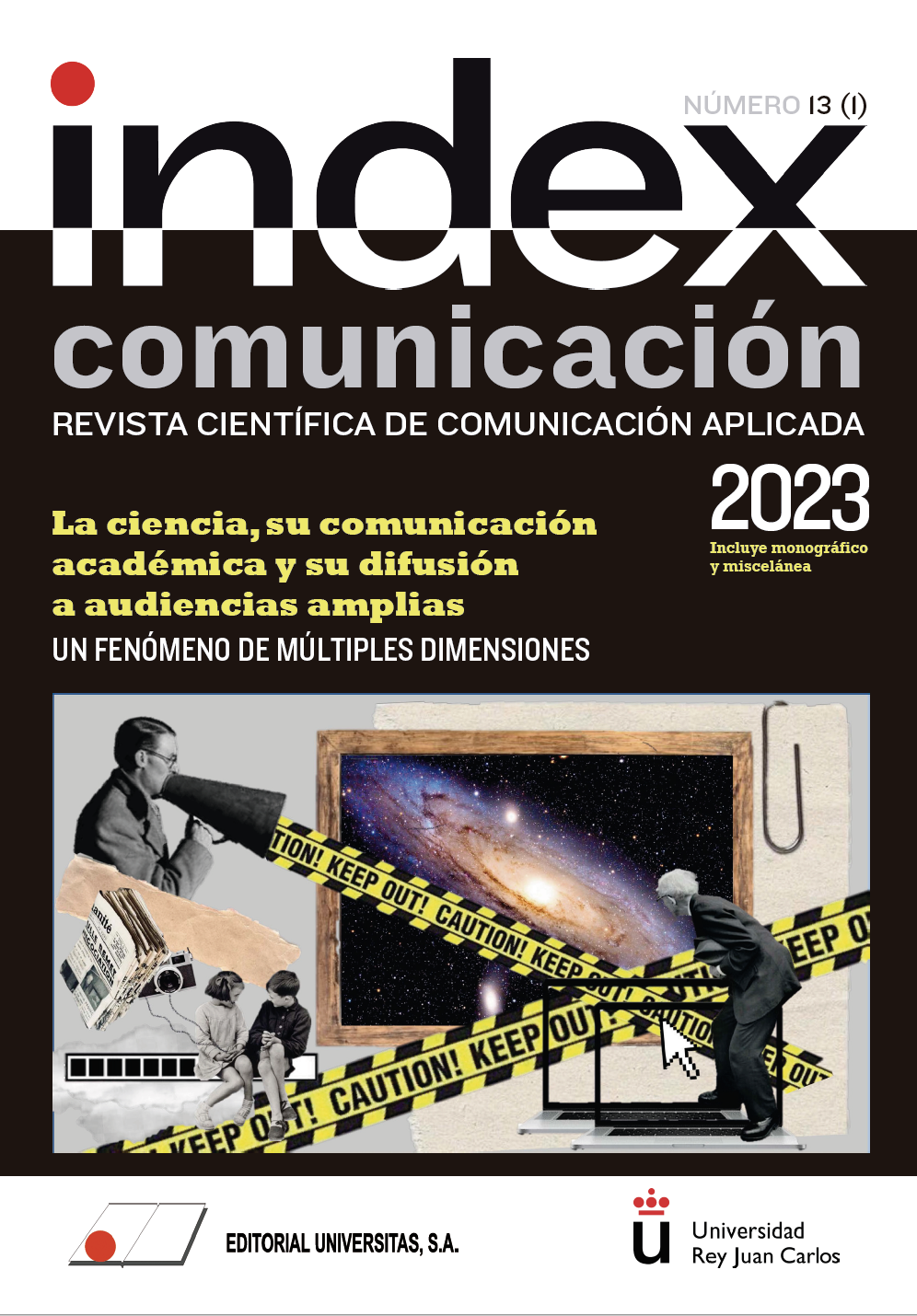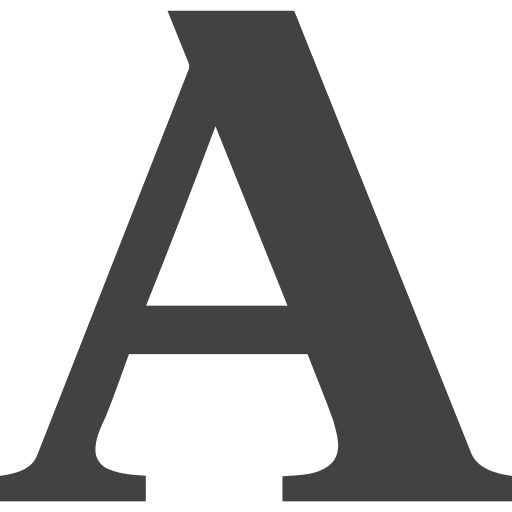Open Access Communication Journals. A World Map
DOI:
https://doi.org/10.33732/ixc/13/01RevistKeywords:
Open Access, Academic/Scientific Journals, Communication Journals, SJRAbstract
Open access publishing has proven to be a very profitable area for all stakeholders in the academic community. However, there are still conflicting views on whether in fact there are differences in their position versus fee-paying journals. This research has been proposed to analyze the configuration of academic journals using the Scimago Journal Rank (SJR) data from the Scopus database. Specifically, we have attempted to find differences or similarities between journals that are open access and those that are not. The results obtained showed that open access journals on communication have lower citation rates and lower results in the quality indicators. On the other hand, the results have allowed us to relativise the statement that countries with lower economic incomes are more committed to the open access publication model.
Metrics
References
ALRYALAT, S. A., SALEH, M., ALAQRAA, M., ALFUKAHA, A., ALKAYED, Y., ABAZA, M. SAA, H. A. Y ALSHAMIRY, M. (2019) The impact of the open-access status on journal indices: a review of medical journals. F1000Research, 8, 266. https://doi.org/10.12688/f1000research.17979.1
ANGLADA, L., & ABADAL, E. (2018). ¿Qué es la ciencia abierta? Anuario ThinkEPI, 12, 292-298. https://doi.org/10.3145/thinkepi.2018.43
BACEVIC, J., & MUELLERLEILE, C. (2018). The moral economy of open access. European Journal of Social Theory, 21(2), 169-188. https://doi.org/10.1177/1368431017717368
BARTLING, S. Y FRIESIKE, S. (2014). Opening science: The evolving guide on how the internet is changing research, collaboration and scholarly publishing. Springer Nature.
BEVERUNGEN, A., BÖHM, S., & LAND, C. (2012). The poverty of journal publishing. Organization, 19(6), 929-938 https://doi.org/10.1177/1350508412448858
BJÖRK, B. C. Y SOLOMON, D. (2012). Open access versus subscription journals: a comparison of scientific impact. BMC medicine, 10(1), 1-10. https://doi.org/10.1186/1741-7015-10-73
ČERNÝ, J. (1998). Historia de la lingüística. Universidad Católica Andrés Bello.
CRIBB, J. Y SARI, T. (2010) Open science: sharing knowledge in the global century. Csiro Publishing.
DORTA-GONZÁLEZ, P. Y DORTA-GONZÁLEZ, M. I. (2022). The influence of funding on the Open Access citation advantage.
https://doi.org/10.48550/arXiv.2202.02082
ENGEBRETSEN, M. YKENNEDY, H. (2020) Data visualization in society. Amsterdam: Amsterdam University Press.
ERBACHER, R. F. (2007, JULIO). Exemplifying the inter-disciplinary nature of visualization research. In 2007 11th International Conference Information Visualization (IV'07) (pp. 623-630). IEEE. https://doi.org/10.1109/iv.2007.49
ESPANHA, R., Y QUINTANILHA, T. L. (2011). Open Access and Multilingual Approach to Communication Journals–The case and the editor’s perspective of Observatorio (OBS*) Journal and the importance of Open Science for the Knowledge Society. Online journal of communication and media technologies, (4), 97-120. https://doi.org/10.29333/ojcmt/2346
EVE, M. P. (2014). Open access and the humanities. Cambridge University Press.
GAULE, P., & MAYSTRE, N. (2011). Getting cited: Does open access help? Research policy, 40(10), 1332-1338.
GONZÁLEZ-PEREIRA, B., GUERRERO-BOTE, V. P., & MOYA-ANEGÓN, F. (2010). A new approach to the metric of journals’ scientific prestige: The SJR indicator. Journal of informetrics, 4(3), 379-391. https://doi.org/10.1016/j.joi.2010.03.002
HARZING, A.W.; ALAKANGAS, S. (2016) Google Scholar, Scopus and the Web of Science: A Longitudinal and Cross-Disciplinary Comparison. Scientometrics 2016, 106, 787–804. https://doi.org/10.1007/s11192-015-1798-9
HOLBROOK, J. B. (2019) Open science, open access, and the democratization of knowledge. Issues in Science and Technology, 35(3), 26-28.
JEON, D. S. Y ROCHET, J. C. (2010). The pricing of academic journals: A two-sided market perspective. American Economic Journal: Microeconomics, 2(2), 222-55. https://doi.org/10.2139/ssrn.1002910
JOKIĆ, M., MERVAR, A. Y MATELJAN, S. (2018). Scientific potential of European fully open access journals. Scientometrics, 114(3), 1373-1394. https://doi.org/10.1007/s11192-017-2629-y
LAAKSO, M., WELLING, P., BUKVOVA, H., NYMAN, L., BJÖRK, B. C. Y HEDLUND, T. (2011) The development of open access journal publishing from 1993 to 2009. PloS one, 6(6), e20961. https://doi.org/10.1371/journal.pone.0020961
LANGHAM-PUTROW, A., BAKKER, C. Y RIEGELMAN, A. (2021). Is the open access citation advantage real? A systematic review of the citation of open access and subscription-based articles. PloS one, 16(6), e0253129. https://doi.org/10.1371/journal.pone.0253129
LARIVIÈRE, V., HAUSTEIN, S., & MONGEON, P. (2015). The oligopoly of academic publishers in the digital era. PloS one, 10(6), e0127502. https://doi.org/10.1371/journal.pone.0127502
LEWIS, C. L. (2018). The open access citation advantage: Does it exist and what does it mean for libraries? Information Technology and Libraries, 37(3), 50-65. https://doi.org/10.6017/ital.v37i3.10604
LÓPEZ-ORNELAS, M., LEVER, C. O. Y LÓPEZ, K. M. D. (2017). Las revistas académicas de comunicación de acceso abierto en México. Retos y vicisitudes. Revista Latina de Comunicación Social, (72), 475-499. https://doi.org/10.4185/rlcs-2017-1175
MCCORMICK, B. H. (1988) Visualization in scientific computing. ACM SIGBIO Newsletter 10(1), 15-21 https://doi.org/10.1145/43965.43966
MIGHELI, M. Y RAMELLO, G. B. (2014). Open access journals and academics'behavior. Economic Inquiry, 52(4), 1250-1266. https://doi.org/10.1111/ecin.12131
MILLER, J. D. (2017). Big Data Visualization. Packt Publishing Ltd.
MOORE, S. A. (2017) A genealogy of open access: negotiations between openness and access to research. Revue française des sciences de l’information et de la communication, (11). https://doi.org/10.4000/rfsic.3220
MOSTERÍN, J. (2016) Conceptos y teorías en la ciencia. Alianza: Madrid
NICHOLAS, D., HAMALI, H. R., HERMAN, E., XU, J., BOUKACEM-ZEGHMOURI, C., WATKINSON, A., RODRIGUEZ-BRAVO, B. ABRIZAH, A., SWIGORI, M. Y POLEZHAEVA, T. (2020). How is open access publishing going down with early career researchers? An international, multi-disciplinary study. Profesional de la información, 29(6). https://doi.org/10.3145/epi.2020.nov.14
NOBES, A. Y HARRIS, S. (2019). Open Access in low-and middle-income countries: attitudes and experiences of researchers. Emerald Open Research, 1, 17. https://doi.org/10.35241/emeraldopenres.13325.1
PAPIN-RAMCHARAN, J. & DAWE, R. (2006) Open access publishing: A developing country view. First Monday
https://doi.org/10.5210/fm.v11i6.1332
PINFIELD, S., WAKELING, S., BAWDEN, D., & ROBINSON, L. (2020) Open access in theory and practice: The theory-practice relationship and openness. Taylor & Francis.
POOLEY, J. D. (2016). Open media scholarship: The case for open access in media studies. International Journal of Communication, 10, 17.
POOR, N. (2009). Global citation patterns of open access communication studies journals: Pushing beyond the Social Science Citation Index. International Journal of Communication, 3, 27. https://doi.org/1932-8036/20090853
POULIN, S. Y TOMASZEWSKI, R. (2014). Open access journals in communication studies: Indexing in five commercial databases. Behavioral & Social Sciences Librarian, 33(1), 3-14. https://doi.org/10.1080/01639269.2014.866019
PRANCKUTĖ, R. (2021). Web of Science (WoS) and Scopus: The titans of bibliographic information in today’s academic world. Publications, 9(1), 12. https://doi.org/10.3390/publications9010012
RODRIGUES, R. S., ABADAL, E., & DE ARAÚJO, B. K. H. (2020). Open access publishers: The new players. PLoS One, 15(6), e0233432. https://doi.org/10.1371/journal.pone.0233432
RUFAI, R., GUL, S. Y SHAH, T. A. (2011). Open Access Journals in Library and Information Science: The Story so Far. Trends in information management, 7(2).
SMITH, K. L., Y DICKSON, K. A. (2016). Open access and the future of scholarly communication: policy and infrastructure (Vol. 9). Rowman & Littlefield.
SILVA, C. P., BARELLA, D. J., & AYALA, M. H. (2014). Temáticas, Metodologías y autorías en revistas de acceso abierto de Chile, Argentina, Brasil, Colombia y México. Perspectivas de la Comunicación-ISSN 0718-4867, 7(2), 7-20.
SUBER, P. (2012). Open access (p. 256). The MIT Press.
SWAMINATHAN, S., SIVAKUMAREN, K. S., Y JEYAPRAKASH, B. (2013). E-JMetrics: a study on open access journal in media and communication with special reference to directory of open access journal.
TUKEY, J. W. (1977) Exploratory data analysis (Vol. 2, pp. 131-160).
TARRAGÓ, N. S. (2007). La comunicación de la ciencia en los países en vías de desarrollo y el Movimiento Open Access. Biblios: Revista electrónica de bibliotecología, archivología y museología, (27), 2.
UNESCO (1999) Declaración sobre la Ciencia y el uso del saber científico. En Conferencia Mundial sobre la Ciencia para el Siglo XXI: un nuevo compromiso.
UNESCO (2021) Declaración de la UNESCO sobre la Ciencia Abierta y el uso del saber científico. En Conferencia General de la Organización de las Naciones Unidas para la Educación, la Ciencia y la Cultura (UNESCO)
VICENTE-SAEZ, R., & MARTINEZ-FUENTES, C. (2018). Open Science now: A systematic literature review for an integrated definition. Journal of business research, 88, 428-436. https://doi.org/10.1016/j.jbusres.2017.12.043
ZHU, J.; LIU, W. (2020) A Tale of Two Databases: The Use of Web of Science and Scopus in Academic Papers. Scientometrics 2020, 123, 321–335. https://doi.org/10.1007/s11192-020-03387-8
Published
How to Cite
Issue
Section
License
Copyright (c) 2022 Francisco Leslie López del Castillo Wilderbeek

This work is licensed under a Creative Commons Attribution-NonCommercial 4.0 International License.
Authors who submit to this journal agree to the following terms:
Authors retain copyright and ensure the magazine's right to be the first publication of the work as licensed under a Creative Commons Attribution-NoComercial 4.0 International License that allows others to share the work with an acknowledgment of authorship of the work and the initial publication in this magazine, with no commercial purpose.
Authors can establish separate additional agreements for non-exclusive distribution of the version of the work published in the magazine (for example, to an institutional repository or publish it in a book), with an acknowledgment of its initial publication in this journal.
It allows and authors are encouraged to disseminate their work electronically (eg, in institutional repositories or on their own website) prior to and during the submission process, as it can lead to productive exchanges, as well as a citation more early and most of the published work (See The Effect of Open Access).















